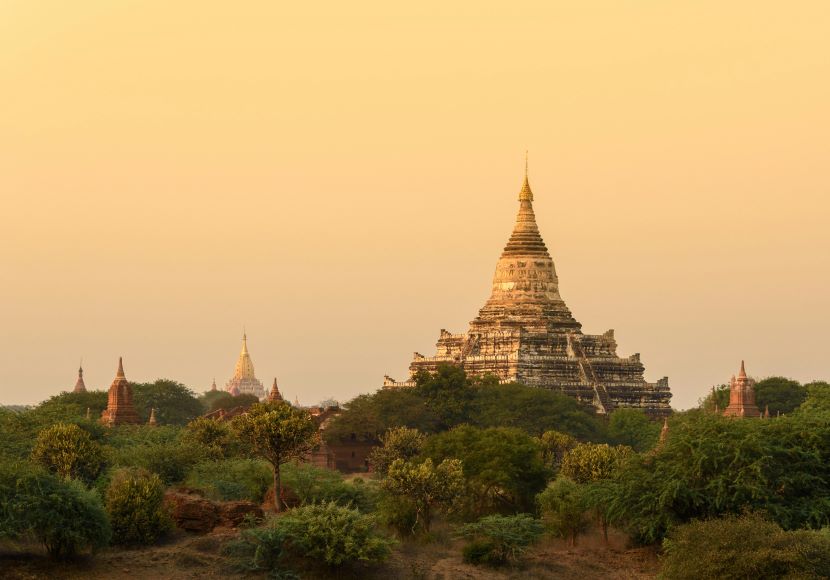Strengthening Upper Myanmar Tourism Through Collaboration, Sustainability And Strategic Promotion
Union Minister Jeng Phang Naw Taung emphasizes collaboration, sustainability, and promotion strategies to strengthen Upper Myanmar tourism sector.
The tourism sector inUpper Myanmarholds significant potential for cultural exchange, economic growth, and regional development. Recognizing this opportunity,Union Minister for Sports and Youth Affairs and Hotels and Tourism Jeng Phang Naw Taungengaged with hoteliers and tourism entrepreneurs in Mandalay on Thursday to discuss strategies for enhancing the country’s tourism industry. The meeting was designed not only to emphasize preservation and upgrading oftourist attraction sitesbut also to encourage the establishment of fresh destinations that reflect Myanmar’s rich cultural and natural heritage.
As the demand for authentic travel experiences continues to grow across Asia, Myanmar’s position as a land rich in cultural diversity, spiritual heritage, and natural splendor places it in a unique advantage. However, achieving sustainable growth requires effective collaboration between government agencies, private enterprises, and local communities. It was within this context that the Union Minister urged all stakeholders to join hands in crafting a forward-looking roadmap for the sector.
Central Committee for National Tourism Development
During his address at the gathering, the Union Minister explained that theCentral Committee on National Tourism Developmenthad been established under the framework of the Myanmar Tourism Law. The committee acts as an integrated platform to develop a comprehensive strategy for advancing tourism nationwide. Its mission revolves around policy formulation, sustainable destination management, and ensuring that Myanmar becomes an attractive choice for international as well as domestic travelers.
By relying on a legal foundation, the government has demonstrated its commitment to aligning tourism with broader national priorities like regional economic integration, cultural preservation, and respectful environmental practices. Through the committee’s initiatives, plans to coordinate across states and regions are being put in place, enabling cohesive development rather than isolated efforts. This form of structured governance is intended to balance the competing needs of growth and preservation.
Preserving Existing Destinations
A key theme highlighted during the meeting was the preservation ofexisting tourist attractions. Myanmar, and particularly Upper Myanmar, is home to historical landmarks, spiritual sites, and natural wonders that have been cherished for centuries. The Mandalay Region itself holds immense cultural weight due to its association with royal heritage, religious architecture, and traditional artistry.
Preservation in this context does not merely imply safeguarding monuments and landscapes from decay. It extends to introducing community-focused management systems where local residents become active participants in sustaining their cultural and natural assets. Tourism, if managed responsibly, can provide the resources needed for conservation efforts, helping to fund restoration projects, protect fragile ecosystems, and elevate traditional crafts to wider markets.
The Union Minister therefore urged all stakeholders to take proactive steps in ensuring that tourist attractions remain well-kept, navigable, and authentically representative of Myanmar’s heritage. Implementing systematic maintenance programs in partnership with regional authorities was suggested as a viable path forward, ensuring that popular sites continue to inspire both local and foreign visitors.
Encouraging New Destinations
Alongside preservation, the creation ofnew tourism destinationswas also raised as an essential element of long-term growth. The Union Minister noted that collaboration across departments would be vital in identifying untapped areas with tourism potential—whether natural landscapes, cultural villages, or adventure-oriented sites.
By diversifying destinations, tourism in Myanmar would not remain concentrated in only a few locations, reducing the risks of overcrowding while distributing economic benefits more evenly. This approach allows hidden villages, ecological parks, and rural craft centers to gain recognition, providing travelers with fresh experiences while boosting small-scale entrepreneurship at the community level. Such diversification ensures that Myanmar emerges as a comprehensive tourism hub with offerings that suit various travel interests and budgets.
Role of Government Assistance
The Ministry of Hotels and Tourism has been actively providingnecessary assistanceto stakeholders across states and regions. This assistance extends to promotional support, marketing campaigns, funding for infrastructure, and the facilitation of training programs for hospitality staff. During the meeting in Mandalay, there was an emphasis on building stronger communication channels between government departments, hotel operators, and local entrepreneurs.
Training was highlighted as a crucial priority. Equipping tourism workers with improved customer service skills, multilingual communication, and cultural sensitivity can enable destinations to align with international travel standards. The Union Minister reiterated that cooperation with community-based organizations, local authorities, and industry representatives is crucial in ensuring that front-line professionals are trained to meet global expectations while still maintaining authentic Myanmar values.
Importance of Information Sharing
Beyond physical and infrastructural development, the Union Minister called for efficient systems ofproviding tourist informationacross all regions. He stressed that travelers, both domestic and international, should be given access to reliable data on destinations, transport options, safety measures, and cultural etiquettes.
This information-sharing model is not only meant to guide visitors but also to enhance their experiences by presenting the diversity of Myanmar’s cultural and natural landscape. Through brochures, digital platforms, information centers, and mobile applications, tourists can be connected with accurate and timely details that allow them to plan journeys more effectively. Highlighting lesser-known villages, craft centers, and rural festivities could also help generate balanced tourism flows across regions.
Dialogue with Entrepreneurs
As part of the meeting, the Deputy Permanent Secretary and the Director of theDirectorate of Hotels and Tourism Mandalay Branchtook questions from attendees. Hoteliers and entrepreneurs voiced their concerns, discussed obstacles in attracting tourists, and offered suggestions on potential destinations worth developing. Issues such as infrastructure bottlenecks, marketing, and sustainable resource management were raised.
The coordination between government officials and private stakeholders opened pathways for mutual understanding. This interactive dialogue illustrated the importance of collective contribution in shaping tourism. Addressing concerns from all sides would help identify feasible approaches that strengthen public-private partnerships.
Concluding Remarks
At the conclusion of the session, the Union Minister coordinated the requirements raised and offered his closing remarks. His message consistently returned to the core themes of collaboration, preservation, and innovative destination development as the guiding principles for the future. A firm commitment was demonstrated by the Ministry to stand alongside entrepreneurs and stakeholders in building a world-class tourism sector in Upper Myanmar.
By taking this path, it was envisioned that Myanmar’s tourism sector could evolve into a robust driver of economic vitality, a guardian of heritage, and a bridge for cultural understanding across the region.
The post Strengthening Upper Myanmar Tourism Through Collaboration, Sustainability And Strategic Promotion appeared first on Travel and Tour World


Comments and Responses
Please login. Only community members can comment.